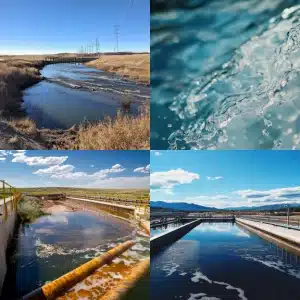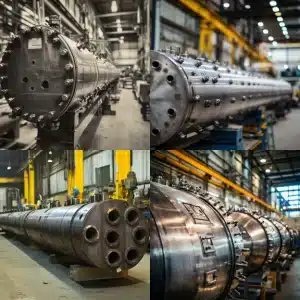EPA levels set safe limits for pollutants to protect human health and the environment, and staying compliant is essential for operational safety, sustainability, and avoiding fines. Red River helps businesses monitor, test, and maintain EPA-compliant pressure vessels and industrial operations.
Know About EPA Levels and Their Importance
Red River understands the critical role EPA levels play in ensuring that your projects are safe and sustainable. Specifically, the Environmental Protection Agency (EPA) establishes standards to protect both human health and the environment. However, determining the best EPA level for your operation can be complex. That’s where we come in to help you navigate these standards and keep your operations compliant and efficient, whether through pressure vessels or modular skids.
What is EPA Level?
An EPA level refers to the threshold limit of pollutants and contaminants deemed safe by the EPA. In other words, these EPA level regulations govern emissions from air and water quality to hazardous materials disposal. Understanding these levels helps companies avoid penalties and maintain smooth operations. At Red River, we provide quality pressure vessels and prefabricated spools that meet strict EPA standards. For more guidance, see our comprehensive guide to pressure vessel inspection.
Why EPA Levels Monitoring is Important
Industries like oil and gas, power generation, and biogas require strict compliance with EPA standards. Failing to meet these standards leads to environmental harm, hefty fines, and reputational damage. By working with Red River, you ensure that your pressure vessels stay compliant with EPA benchmarks, prioritizing safety and performance. Explore our safety and compliance in pressure vessel design to understand more.
Overall Misconceptions on EPA Level Standards
Many organizations mistakenly believe that meeting minimum compliance thresholds is sufficient. However, industry best practices often require stricter standards. At Red River, we help customers exceed basic guidelines, preparing them for future regulatory challenges. Learn about the importance of ASME certification in quality assurance for enhanced compliance.
What is a Good EPA Level?
Defining Safe and Acceptable Levels According to EPA Standards
Understanding what constitutes a “good” EPA level is essential for safe and compliant operations. Typically, a “good” EPA level represents the maximum allowable pollutant concentration still deemed safe by regulatory bodies.
Best EPA Levels for Air Quality
The EPA’s clean air standards regulate harmful emissions like carbon monoxide and sulfur dioxide. In this context, industrial facilities must keep their emissions below these limits to protect both workers and the surrounding community.
Safe EPA Levels of Water Contaminants
EPA guidelines also cover water safety standards, focusing on contaminants like lead and mercury. By adhering to these standards, industries reduce risks and support environmental sustainability.
Factors Influencing the Setting of EPA Level Guidelines
EPA guidelines are influenced by industry type, location, and operational impact. For example, oil and gas industries often face stricter standards due to their potential for significant environmental harm. Check out our guide to vapor recovery tower vessels and types of industrial pressure vessels for industry-specific applications.
How to Make Sure That Your Business Stays EPA-Compliant
Maintaining EPA-compliant levels is crucial for safety, sustainability, and operational efficiency. Failing to comply could result in fines, delays, and environmental risks. At Red River, we help businesses navigate these regulations through pressure vessel manufacturing and metal fabrication solutions. Also, explore our capabilities and solutions pages to see how we ensure compliance across various operations.
Steps on How to Monitor and Test EPA Levels
Effective monitoring and testing involve using modern systems to track emissions and pollutants. Regular inspections, accurate record-keeping, and prompt corrective actions are essential. Learn more about pressure vessel inspection requirements and reactor pressure vessel manufacturers for industry best practices.
Common Mistakes Leading to EPA Levels Violations
Common infractions that lead to EPA violations include outdated equipment, poor maintenance, and lack of proper documentation. Avoid these issues by staying proactive and adhering to quality assurance in custom pressure tank manufacturing. Review our types of failure in pressure vessels and failure criteria for pressure vessels to prevent common mistakes and ensure your operations remain fully compliant with EPA Levels.
Need a reliable partner?
Red River specializes in the design and manufacturing of pressure vessels, prefabricated spools, and skid packages. Reach out to us today via our contact page and experience the Red River difference where American-made quality and values come together. You can also request a quote to get started on your EPA-compliant project.
Frequently Asked Questions
1. What is the role of the EPA in regulating pressure vessels?
The Environmental Protection Agency (EPA) sets standards to ensure safe and balanced industrial operations, including those involving pressure vessels. It regulates emissions, waste, and hazardous substances to minimize environmental impact. Manufacturers must comply with these standards to avoid penalties and ensure environmental safety.
2. How are pressure vessels tested to ensure conformance to the EPA?
Pressure vessels undergo both mechanical and environmental testing to ensure compliance. Mechanical tests verify the vessel’s strength, while environmental assessments check emissions control and waste management. Third-party inspectors typically ensure that pressure vessels meet EPA standards.
3. Is the pressure vessel design EPA compliant?
Yes, the design of a pressure vessel is crucial to meeting EPA standards. Proper venting, containment systems, and the use of corrosion-resistant materials are essential to preventing emissions and leaks. This approach ensures that the vessel operates within safe EPA levels throughout its lifecycle.
4. What happens to a business if it does not comply with EPA pressure vessel codes?
Non-compliance with EPA pressure vessel codes can lead to fines, shutdowns, and potential environmental damage. Companies may be forced to upgrade equipment or adopt corrective measures to meet EPA standards, resulting in increased operational costs.
5. Through what business streams can companies tap into the modified EPA regulations?
Companies can stay updated with EPA regulations by consulting official publications, working with industry experts, and investing in technologies like real-time emissions monitoring systems. Staying proactive and maintaining open communication with regulators helps businesses remain compliant.
Key Takeaways
- EPA levels define safe pollutant thresholds for air, water, and hazardous materials.
- Compliance prevents fines, environmental damage, and reputational risks.
- Monitoring, testing, and proper maintenance are essential to meet EPA standards.
- Exceeding minimum compliance and using expert guidance ensures long-term regulatory readiness.
Related Blog Post
- Conductivity Levels in Drinking Water: Why They Matter for Safety and Industry
- Common Signs Your Drinking Water May Be Unsafe | Red River
- Understanding Unregulated Drinking Water Sources | Red River
- Knowing Safe Drinking Water Standards | Red River
- Why Drinking Water Quality Standards Matter | Red River
- Understanding EPA Contaminants and Their Impact | Red River




